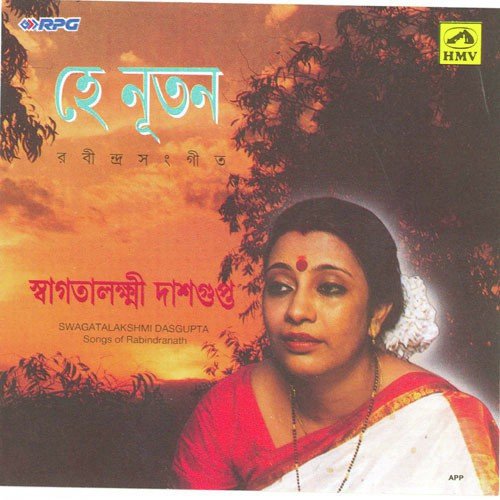Free Download Rabindra Song In Bangla

Our Dream Long back me and my brother on the eve of ১লা বৈশাখ sitting at Amrakunja, Shantiniketan were wondering about the relevance of Tagore's thoughts in the context of present day's world. We realized that his words, music, and poetry and other creations inspired all of us in various stages of life. At that moment we thought if we could do something to spread his words, music, thoughts and ideologies to as many as possible human beings, then we might be able to reciprocate a little bit towards his vast contribution to the society. We request everyone of you to join hands with us in this initiative so that we can make a wonderful world for all the human beings.
Rabindra Jayanti - Rabindra Sangeet is a Bengali album released on May 2017. Rabindra Jayanti - Rabindra Sangeet Album has 19 songs sung by Arundhati Holme Chowdhury, Suchitra Mitra, Kanika Banerjee. Listen to all songs in high quality & download Rabindra Jayanti - Rabindra Sangeet songs on Gaana.com. Free Download Indian Bangla, Adhunik Bangla, Bangla Band/Pop & Movie Songs, Rabindra Sangeet, Nazrul Geeti, Lalon Geeti, Folk Songs + Listen Online' Download Free Mp3 Songs and Listen Music Online. Bangla Old Mp3 Song (16) Bangla Short Film (1) Bangla.
Let's keep him in our heart.
Contents • • • • • • • • • • • • • History [ ] Rabindra Sangeet merges fluidly into Tagore's literature, most of which—poems or parts of novels, stories, or plays alike—were lyricised. Influenced by the style of, they ran the entire gamut of human emotion, ranging from his early dirge-like Brahmo devotional hymns to quasi-erotic compositions. They emulated the tonal color of classical to varying extents.
Office ipa cracked. Some songs mimicked a given raga's melody and rhythm faithfully; others newly blended elements of different ragas. Yet about nine-tenths of his work was not bhanga gaan, the body of tunes revamped with 'fresh value' from select Western, Hindustani, Bengali folk and other regional flavours 'external' to Tagore's own ancestral culture. Scholars have attempted to gauge the emotive force and range of Hindustani ragas: the pathos of the purabi raga reminded Tagore of the evening tears of a lonely widow, while kanara was the confused realization of a nocturnal wanderer who had lost his way. In bhupali he seemed to hear a voice in the wind saying 'stop and come hither'. Paraj conveyed to him the deep slumber that overtook one at night's end. 'Tabu Mone Rekho', a song by Tagore, sung in his own voice. The song was written in 1887 CE (1294 ).
Problems playing this file? Tagore influenced maestro and Buddhadev Dasgupta.
His songs are widely popular and undergird the Bengali ethos to an extent perhaps rivalling Shakespeare's impact on the English-speaking world. [ ] [ ] It is said that his songs are the outcome of five centuries of Bengali literary churning and communal yearning.
[ ] has said that these songs transcend the mundane to the aesthetic and express all ranges and categories of human emotion. The poet gave voice to all—big or small, rich or poor.
The poor Ganges boatman and the rich landlord air their emotions in them. They birthed a distinctive school of music whose practitioners can be fiercely traditional: novel interpretations have drawn severe censure in both West Bengal and Bangladesh. [ ] For Bengalis, the songs' appeal, stemming from the combination of emotive strength and beauty described as surpassing even Tagore's poetry, was such that the Modern Review observed that '[t]here is in Bengal no cultured home where Rabindranath's songs are not sung or at least attempted to be sung. Even illiterate villagers sing his songs'.
Of introduced non-Bengalis to rabindrasangit in The Music of Hindostan, calling it a 'vehicle of a personality. [that] go behind this or that system of music to that beauty of sound which all systems put out their hands to seize.'
In 1971, became the national anthem of Bangladesh. It was written—ironically—to protest the along communal lines: lopping Muslim-majority East Bengal from Hindu-dominated West Bengal was to avert a regional bloodbath. Tagore saw the partition as a ploy to upend the, and he aimed to rekindle Bengali unity and tar communalism. Was written in, a Sanskritised register of Bengali, and is the first of five stanzas of a Brahmo hymn that Tagore composed. It was first sung in 1911 at a Calcutta session of the and was adopted in 1950 by the Constituent Assembly of the Republic of India as its national anthem. Songs [ ] His songs are affectionately called Rabindra Sangeet, and cover topics from humanism, structuralism, introspection, psychology, romance, yearning, nostalgia, reflection, modernism.
Tagore primarily worked with two subjects – first, the human being, the being and the becoming of that human being, and second, Nature, in all her myriad forms and colours, and of the relationship between the human being and Nature and how Nature affects the behavior and the expressions of human beings. (or Bhanusingher Podaboli), one of Tagore's earliest works in music, was primarily in a language that is similar and yet different from Bengali – this language,, was derived from the language of the hymns, and of texts like 's, some influences from can be found, courtesy Tagore's extensive homeschooling in the, the, as well as in poetic texts like 's. Tagore was one of the greatest narrators of all time, and throughout his life, we find a current of narration through all his works that surges with upheavals in the psyche of the people around him, as well as with the changes of seasons. A master of metaphor, it is often difficult to identify the true meaning that underlies his texts, but what is truly great about Tagore, is that his songs are identifiable with any and every possible mood, with every possible situation that is encountered by a person in the course of life.